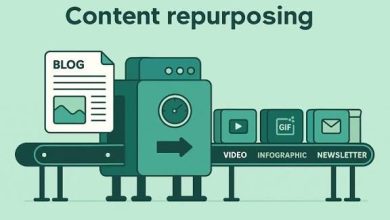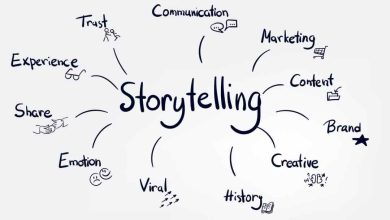Value Ladder Stages: How to Move Your Audience from Attention to Advocacy
It’s not enough to get attention. If you want sales and long-term customers, you must guide your audience through each stage of the value ladder.

Value ladder stages for business growth aren’t just some fancy marketing concept; they’re the backbone of how successful brands move people from “just discovered you” to “can’t stop buying from you.” You might be showing up online, posting great content, and even running ads, yet your sales still feel stuck. The issue isn’t visibility, it’s structure. You’re talking to everyone the same way, at every stage.
Meanwhile, businesses with less content are making more sales because they understand this: Every audience member is at a different point in the journey. And the best way to serve (and convert) them is to guide them step by step.
This is where value ladder stages come in, from awareness to advocacy, each stage designed to help your audience grow with you, trust you, and eventually buy from you.
Let’s break it down.
What Is a Value Ladder?
A value ladder is simply a structured way of offering your products or services, from low-commitment (free or low-cost) to high-value (your premium offers). It is also a mapped-out framework that outlines the progressive journey someone takes as they come into contact with your brand. From the awareness stage to the advocacy stage.
It’s how smart entrepreneurs move people from “just found you” to “take my money!” without being forceful or sounding salesy.
At a basic level, the value ladder is primarily about building trust and maintaining relationships with your audience as they progress from each rung of the ladder. Think of it like dating: First, they see you (awareness); Then, you get to know each other (interest), and finally, they commit (purchase).
Not everyone in your audience list is at the same stage, and that’s okay. What’s not okay is treating them all the same, using the same content, and offering the same offers to them.
The Stages of the Value Ladder
To ensure you get to your audience with the right message or offers, you must understand that six journeys shape how your audience interacts with your brand:
1. Awareness Stage
This is where the journey begins. This is the stage where someone just stumbles on your brand for the first time. It marks the beginning of their interaction with your brand. This could be through a blog post, video marketing, ads, an event, etc.
At the awareness stage, they are looking to understand how your brand can serve their needs, they are looking to explore, and they are looking to commit. And ultimately, they want to know if your brand is worth their attention in any form.
Your job, on the other hand, is not to sell to them. It is to show them something that confirms that your brand is worth the attention they need. It is important for you at this point to give them reasons to want to continue the journey. See it as a planting stage where you have to nurture with care, or else you might lose them.
2. Engagement Stage
At this stage, you’ve sown something in them that needs to germinate. They’ve read your content, they’ve seen your video content, they’ve seen your ads, or maybe follow you on social media. Your role is to push them a little bit closer.
Move them from the stage of passivity. Move them from the place of being a passive audience or passive observer to an active audience of your brand. In fact, at this point, you’re not meant to still sell to them. No, don’t sell to them at this point. What you should do is to appeal to them that you are helpful.
How do you do this? You can introduce them to download a resource, to sign up for a short email class, to join a newsletter, or even to attend a free event. Don’t tell them to attend your paid event. Don’t push anything in the form of selling to them.
Anything that will make them give you money at this stage, do not involve them. Whatever it is you will be doing at the engagement stage, ensure it is free. So see it as you welcoming them and then saying, Oh, we’re glad to have you here. Do you want to see more?”
Make them feel relevant. Make the offer also feel relevant. It will be more appreciated if the offer you’re offering them is more relevant to their pain point. It may not be able to solve the whole of their problems, but at least on the surface, it is something. Now, from there, you can begin to build a relationship that can grow.
3. Conversion
Conversion is where you strategically want them to take action. First, they’ve seen your brand, they’ve read your posts, they’ve seen your ads, they’ve attended your free events, or you’ve given them a free resource.
Your job here is to minimise the barrier of taking that action and then increase the clarity of your message.
Now, what does that mean? This, in other words, means that at this point, you can offer them a low-ticket offer.
Don’t give them your high-value offer yet, or else they’re going to run away from you. So, what you do at this conversion stage is that you can offer them a low-ticket product or service, maybe a low-cost trial, flexible membership tiers, or a simple sign-up with a warm, guided onboarding experience.
The point, again, is not to pressure them to buy from you. The focus here is to build momentum. The focus here is to strategically bring them to a point where they can trust you. So, make your offer as clear as possible.
When your offer and message are clear, they are easily converted. When the process, the commitment feels like they are in the right place, they have the right brand to give them what they need, and they are easily converted.
4. Commitment
This is where you deliver your core value. It is your turn to prove that it was worth the effort. This is where you begin to build that relationship. Because at this point, you are no longer persuading them. You’re no longer convincing them to trust your brand.
What you are doing is making that experience feel like it has been designed for them. Make your new members feel welcome, genuinely wanted, and genuinely valued. This could mean giving them full access to community events, trainings, etc.
5. Loyalty
This is where you deepen the relationship. By this, you’ve, you’ve delivered on your promise, and your audience is convinced that the value is real. However, the fact that your audience can attest to the value of your delivery is worth their attention, money, or time, does not mean that they are automatically loyal to you. No, because loyalty doesn’t happen automatically.
Loyalty is built on repeated purchases. It is built over time. It is built through an ongoing process. To earn their loyalty, ensure that you resell to them. Offer something more valuable, something premium. Give them premium content. Offer advanced features or even new opportunities to participate in your brand. Invite them to mentorship programs. Give them early access opportunities.
6. Advocacy
Turn your supporters into champions. When someone reaches the advocacy stage, they are no longer benefiting from your work. They now believe in your cause; they believe in your mission; they believe in your goal; they believe in your purpose. These are people who share your content unpromoted. They share your content without even asking you to bring anything in return. They recommend your brand, your programmes, and your services without you demanding it.
Your role is to recognise and empower them. How do you do that? This could mean speaking at your events, contributing a case study, participating in whatever way that fits into your brand’s goal, or featuring them in a spotlight story.
Advocates don’t just amplify your brand; they reinforce your credibility, and that is the point you should aim to reach as a brand owner. They help humanise your brand, they help attract like-minded people, and they help sustain momentum.
Conclusion
The real secret to consistent sales and brand loyalty lies in understanding the value ladder stages for business growth. Instead of pitching everyone the same way, learn to meet your audience where they are and guide them upward, from strangers to superfans.
Whether they just found you, downloaded your freebie, or already made a purchase, each stage deserves its own content, offer, and care. That’s how you turn attention into trust, and trust into transformation.
If you’re ready to stop guessing and start growing, use the value ladder stages to build your value ladder today and see your audience already climbing.




